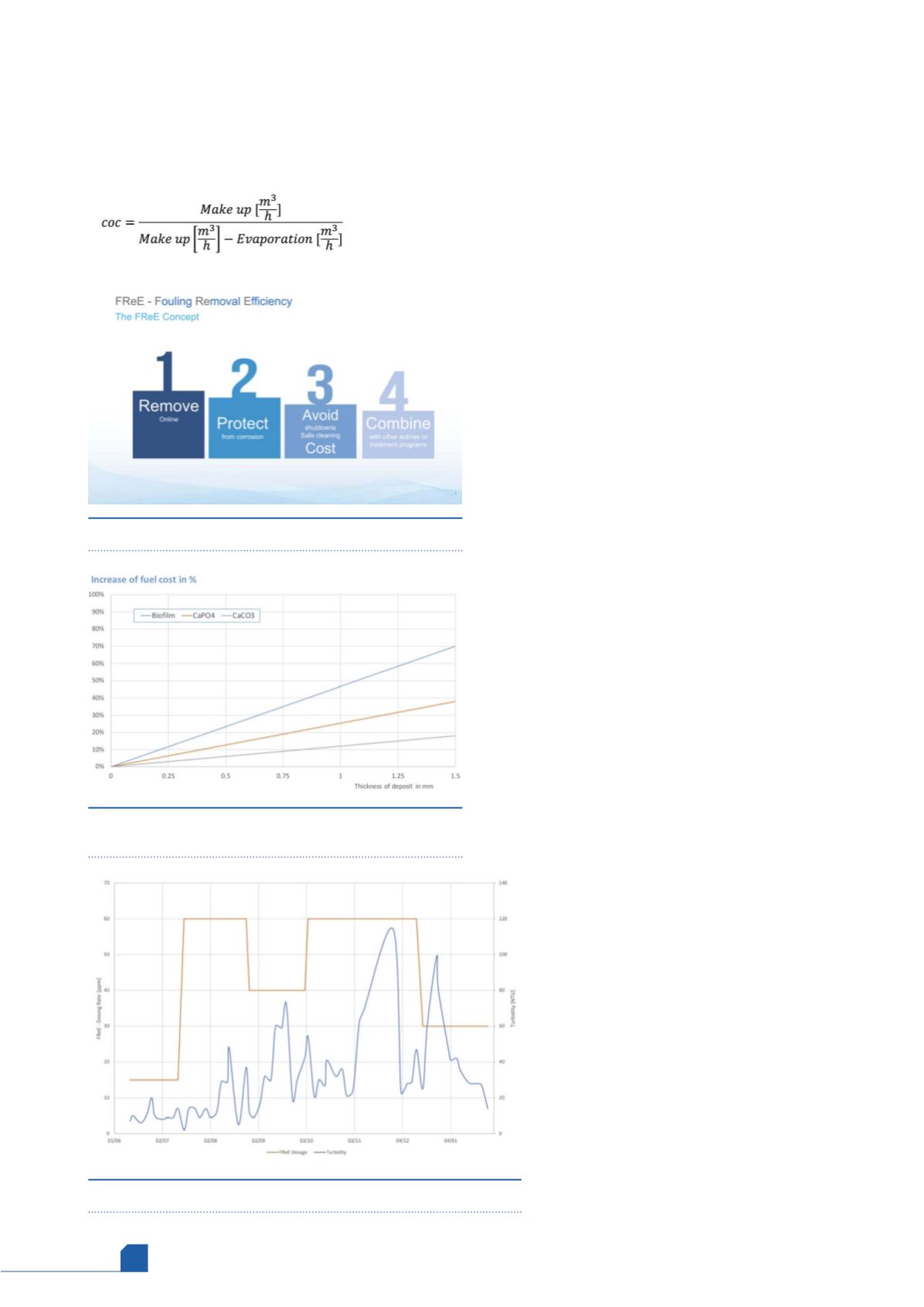
July
2020
HYDROCARBON
ENGINEERING
48
cycles of concentration (CoC) and can be calculated according
to the following formula. The higher the absolute number of
the CoC is, the higher the salt concentration in the cooling
water in relation to the make-up water concentration is:
In addition to Equation 1, the air itself also contains particles,
which are washed out and dispersed in the cooling water as
suspended solids.
All of the above create critical conditions, especially inside
the cooling tower filling labyrinth, as several factors meet
together in one place: concentration increase, availability of
fouling material, large surfaces and low flow velocity.
A new concept
Kurita has developed a new easy to apply online cooling system
cleaning programme, named FReE, which stands for Fouling
Removal Efficiency. The treatment has a range of Turbodispin®D
– polymers for dispersion of inorganic deposits and suspended
solids.
With this combination of products and technologies, FReE
is able to remove practically any type of deposit (Al-Silica,
sulfate, biofouling, algaes, CaCO
3
).
The concept can be either used as standalone online
cleaning programme or as a top up of a Kurita water treatment
programme, e.g. as preventive action after product leakages. The
technology is compatible with any of the company’s other
cooling water treatment programmes and is built on four basic
pillars, as shown in Figure 1.
The technology is based on filming technology which
shows several advantages. The main product of the new
technology removes biofouling and acts as a dispersing agent.
The dispersant and biodispersant effects are obtained as the
active groups of the new product have a higher affinity to the
metallic surfaces than the biofouling or corrosion products.
FReE products penetrate slowly in between the metallic surface
and the deposits and separates the deposit from the surface. As
a result, the sediments are gradually and gently dissolved and
removed from the system. The remaining deposits, due to its
now porous structure, become fragile and are also removed
step by step through the supporting dispersant for the inorganic
matter. No system shutdown is required.
The high affinity of the active ingredients towards the
metallic surfaces forms a complete film corrosion protection
‘barrier’. This physical (molecular) barrier between the metal
surface and the water minimises impacts of any critical
situation, such as product leakages or times of high biofouling
(e.g. spring).
The system is undergoing a slow and continuous
cleaning process, which can last weeks and months.
However, costly shutdowns are being avoided with
the online cleaning treatment.
Application study
This application study shows how FReE can help to
remove biofouling deposits inside a cooling tower.
Two open cooling towers in an industrial area with an
open sea nearby suffered intense episodes of
biofouling growth. The biofilm accumulated in the
cooling tower filling of the system and severely
increased the water consumption. The production
management of the company was worried about the
low performance of its primary cooling system and
asked Kurita’s local engineers to improve its
effectiveness. The cooling demand was higher than in
the previous years, and the support through an
(1)
Figure 1.
Basic principle of FReE technology.
Figure 2.
Cost impact of deposits on a condenser
surface.
Figure 3.
Effect of FReE dosage on the cooling water turbidity.








